redis底层支持多种事件循环,本文仅看epoll类型的。
epoll介绍·
下面摘抄自GPT
epoll 是 Linux 系统中用于高效处理大量文件描述符 I/O 事件的机制。它比传统的 select 和 poll 系统调用更高效,尤其是在处理大量连接时。epoll 的核心在于其事件驱动模型,它允许应用程序只关注感兴趣的事件,从而减少系统开销。
epoll 的使用方法主要包含三个系统调用:
1. epoll_create1(int flags): 创建一个 epoll 实例,返回一个 epoll 文件描述符。flags 参数可以是 0 或 EPOLL_CLOEXEC。EPOLL_CLOEXEC 表示在 fork() 后子进程会自动关闭该 epoll 文件描述符。
1 |
|
2. epoll_ctl(int epfd, int op, int fd, struct epoll_event *event): 管理 epoll 实例中的文件描述符。epfd 是 epoll 文件描述符;op 指定操作类型,可以是 EPOLL_CTL_ADD(添加)、EPOLL_CTL_MOD(修改)或 EPOLL_CTL_DEL(删除);fd 是要操作的文件描述符;event 指向一个 epoll_event 结构体,定义了要监控的事件类型。
1 | struct epoll_event event; |
epoll_event 结构体定义如下:
1 |
|
events 字段可以是以下事件类型的组合:
EPOLLIN: 可读事件EPOLLOUT: 可写事件EPOLLERR: 错误事件EPOLLHUP: 悬挂事件EPOLLRDHUP: 对端关闭连接事件 (Linux 2.6.17+)EPOLLET: 边缘触发模式 (ET)EPOLLONESHOT: 一次性触发模式
3. epoll_wait(int epfd, struct epoll_event *events, int maxevents, int timeout): 等待 I/O 事件发生。epfd 是 epoll 文件描述符;events 指向一个 epoll_event 数组,用于存储发生的事件;maxevents 指定数组大小;timeout 指定超时时间(以毫秒为单位)。
1 | struct epoll_event events[MAX_EVENTS]; |
边缘触发 (ET) 和水平触发 (LT):
- 水平触发 (LT): 默认模式。只要文件描述符处于就绪状态,
epoll_wait就会返回事件。即使你没有处理完所有数据,下次调用epoll_wait仍然会返回事件。 - 边缘触发 (ET): 只有当文件描述符状态发生变化时,
epoll_wait才会返回事件。例如,只有当新的数据到达时,才会返回可读事件。使用 ET 模式需要特别小心,必须确保每次都读取所有可用的数据,否则可能会错过事件。 通常需要配合非阻塞 I/O 使用。
redis源码分析·
先看epoll创建调用链路:

具体初始化代码在aeCreateEventLoop
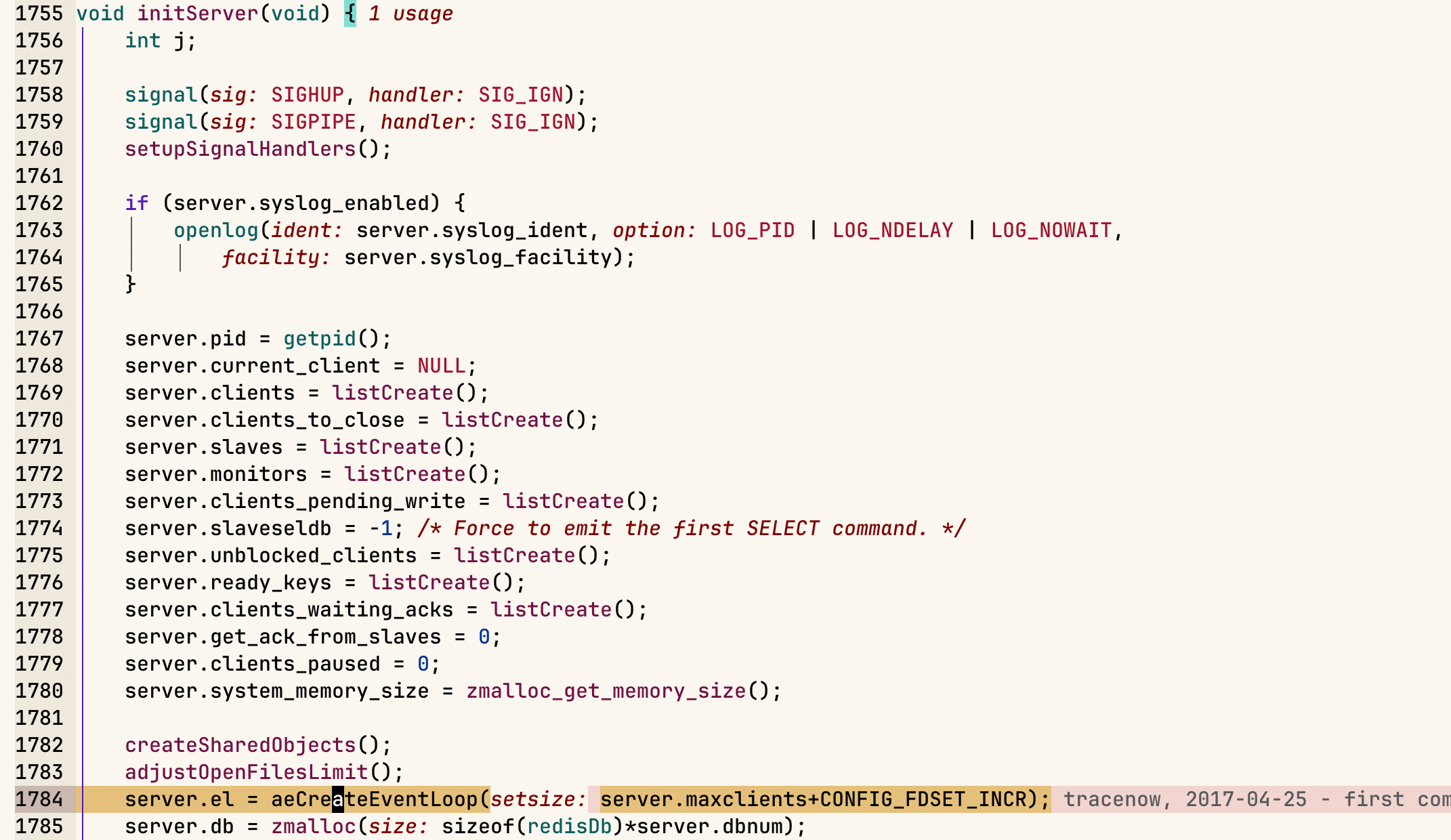
aeCreateEventLoop 支持传入一个 setsize 参数,该参数限制了最大可注册的事件个数。默认为 maxclients(10000) + CONFIG_FDSET_INCR(128)
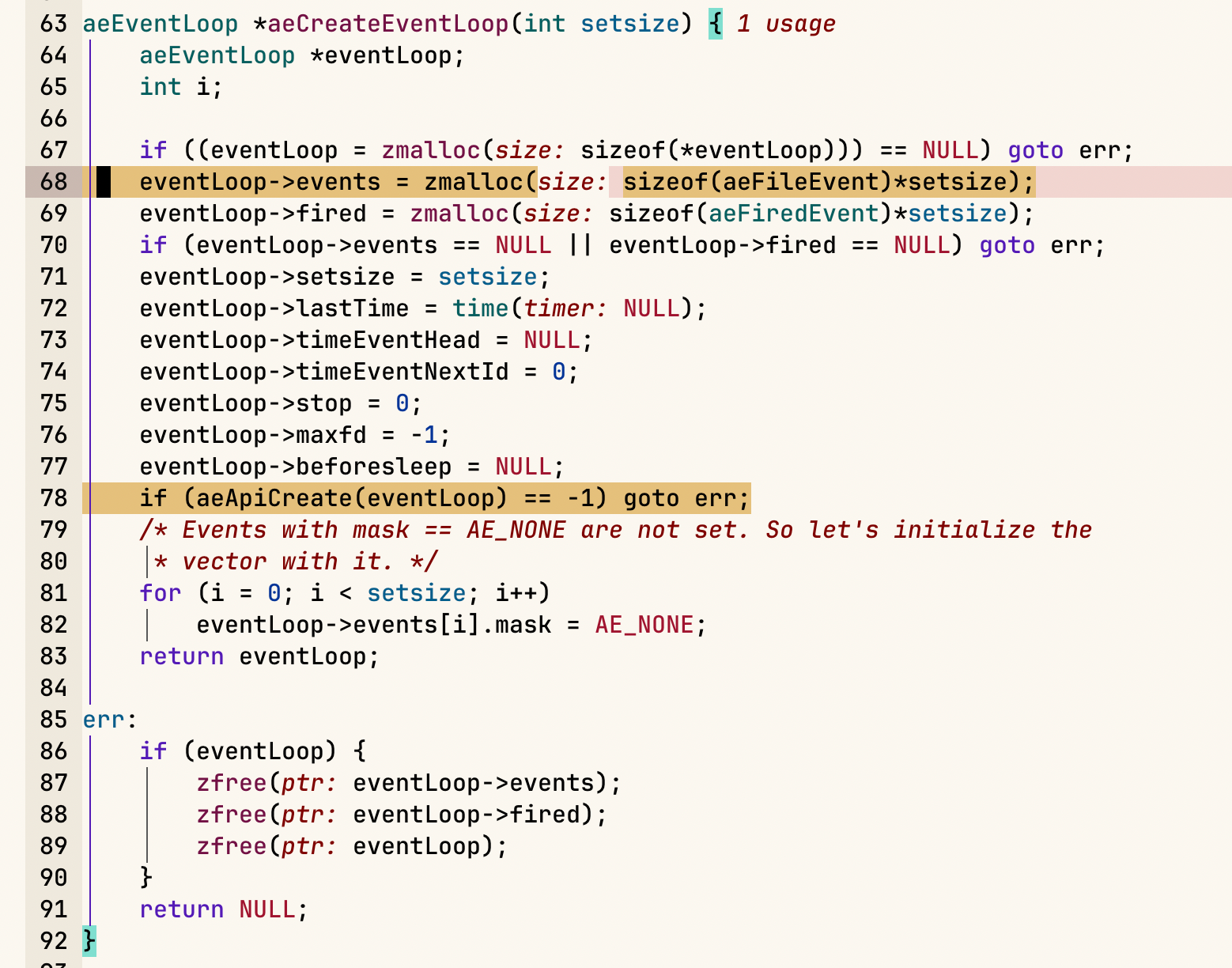
这里的eventLoop定义:
1 | /* State of an event based program */ |
主体逻辑分配event array,初始化些变量,然后调用aeApiCreate :
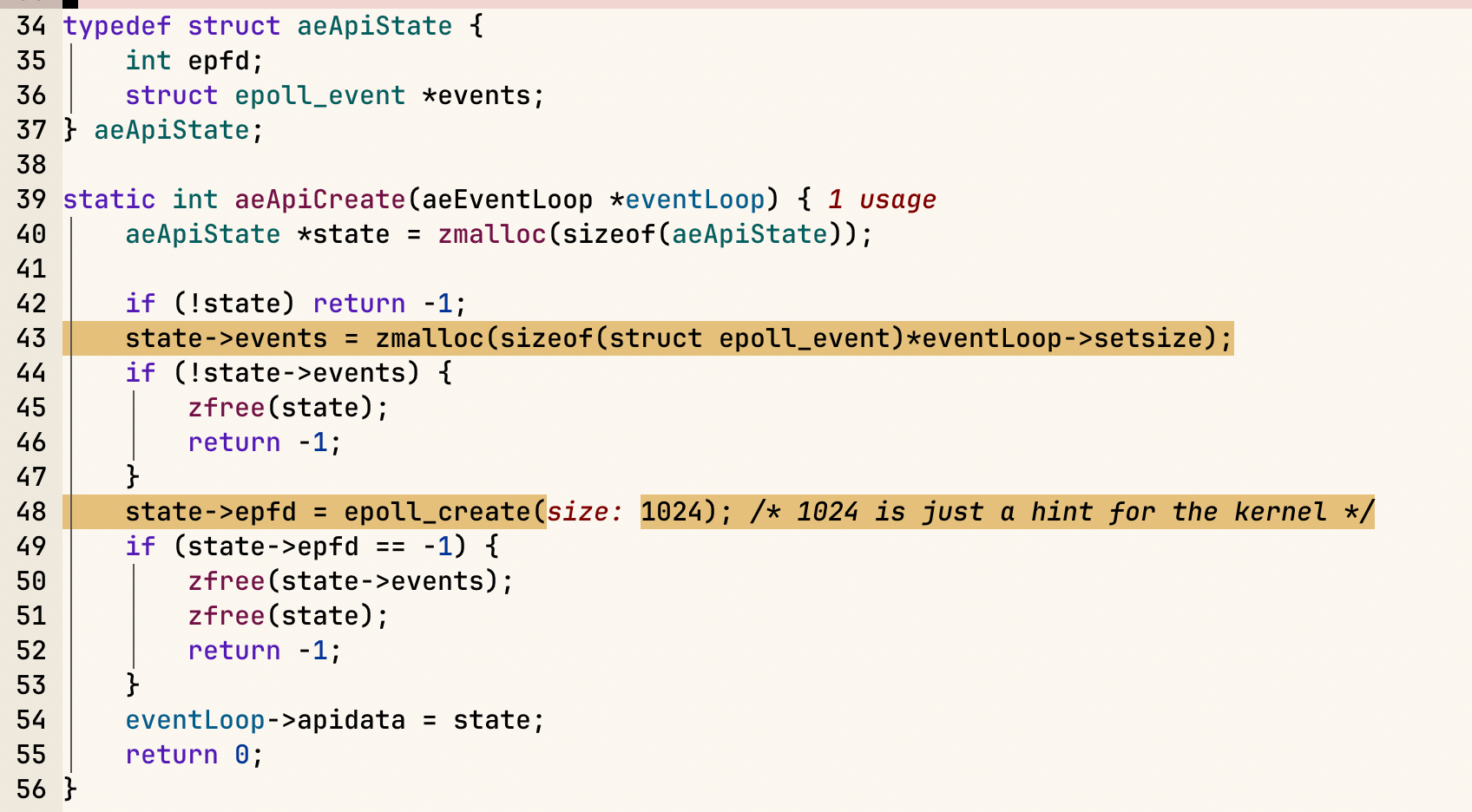
这里传给epoll_create的1024没啥用。查了下manual:
epoll_create() creates a new epoll(7) instance. Since Linux 2.6.8, the size argument is ignored, but must be greater than zero; In the initial epoll_create() implementation, the size argument informed the kernel of the number of file descriptors that the caller expected to add to the epoll instance. The kernel used this information as a hint for the amount of space to initially allocate in internal data structures describing events. (If necessary, the kernel would allocate more space if the caller's usage exceeded the hint given in size.) Nowadays, this hint is no longer required (the kernel dynamically sizes the required data structures without needing the hint), but size must still be greater than zero, in order to ensure backward compatibility when new epoll applications are run on older kernels.
看了怎么创建的,再看下怎么使用。使用 epoll_ctl 搜索:

用的地方还挺多的,这里就分析initServer
先看aeCrerateFileEvent的定义:
1 | int aeCreateFileEvent(aeEventLoop *eventLoop, int fd, int mask, |
传入fd和对应mask,以及事件响应后的proc,和一个context。然后调用aeApiAddEvent,底层就是epoll_ctl来为fd添加event。
ok,回到initServer:

第一个for循环是最重要的。不过这里的ipfd数组哪来的?
该数组定义在redisServer结构体:
1 | int ipfd[CONFIG_BINDADDR_MAX]; /* TCP socket file descriptors */ |
CONFIG_BINDADDR_MAX默认16.
ipfd的初始化在:

这个函数的功能注释如下:
1 |
|
翻译下:根据配置的server.bindaddr和传入的port,配置一堆fd来监听这些地址+port。如果没有配置server.bindaddr,则默认绑定到所有ip。
所以回到前面的for循环,aeCreateFileEvent(server.el, server.ipfd[j], AE_READABLE, acceptTcpHandler,NULL)一行,默认添加了16个fd的可读事件,回调函数为acceptTcpHandler。
回忆上文aeCreateFileEvent实现中的一行aeFileEvent *fe = &eventLoop->events[fd], 其实这里还蛮取巧的,因为linux(类unix系统应该都一样)中每个进程分配fd都是从当前可用的最小的开始分配,除开默认每个进程都有的0,1,2. 那么就是从3开始分配。所以这里直接将fd用作index来索引events了。不过其他流程注册的fd有多大???还好events默认大小也挺大的(1w+).
for循环完成后,又为socket和pipe也加了可读的事件。
ok,常规事件添加完成,redis还有超时事件。

实现上是个单链表, 新添加的超时事件插入到超时链表头。(笔者:那每次都从扫描整表???)
1 | long long aeCreateTimeEvent(aeEventLoop *eventLoop, long long milliseconds, |
好,到此,eventloop的创建的添加都说完了。再看看触发,触发的关键字是 epoll_wait

都是通过aeProcessEvents函数处理,一个来自main, 一个是些rdb和aof的处理。这里关心main函数的:
1 | void aeMain(aeEventLoop *eventLoop) { |
每次处理event前,有个before处理(这个不关心)。 看aeProcessEvents
函数注释:
1 | /* Process every pending time event, then every pending file event |
先处理time event,再出来 file event。 默认flag是AE_ALL_EVENTS,处理所有事件。
先从Timer中(单链表)找到最近的要过期的event。如果有,则计算该event距离当前的时间,并保存在tvp中, 给后面的epoll_wait用。
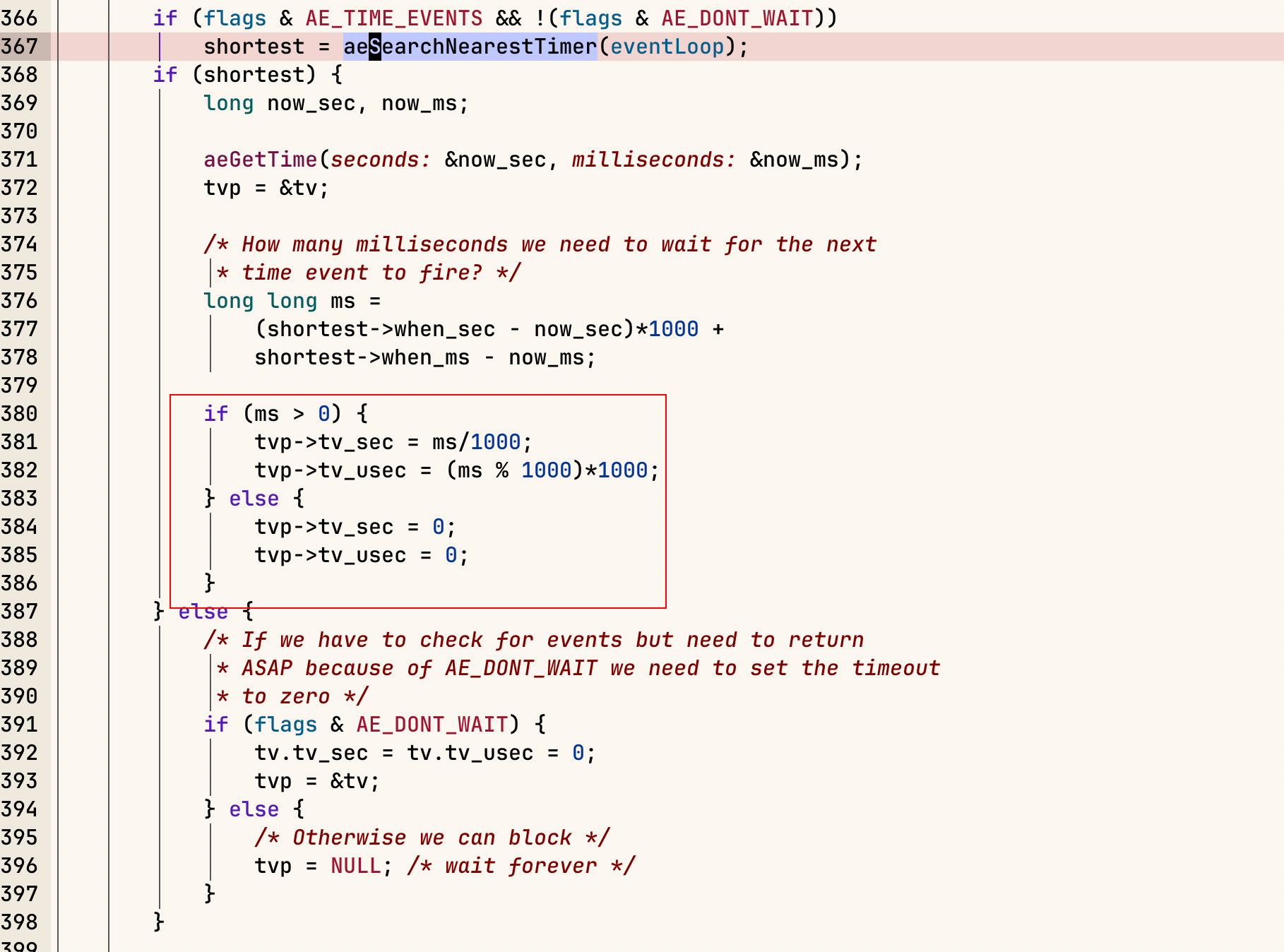
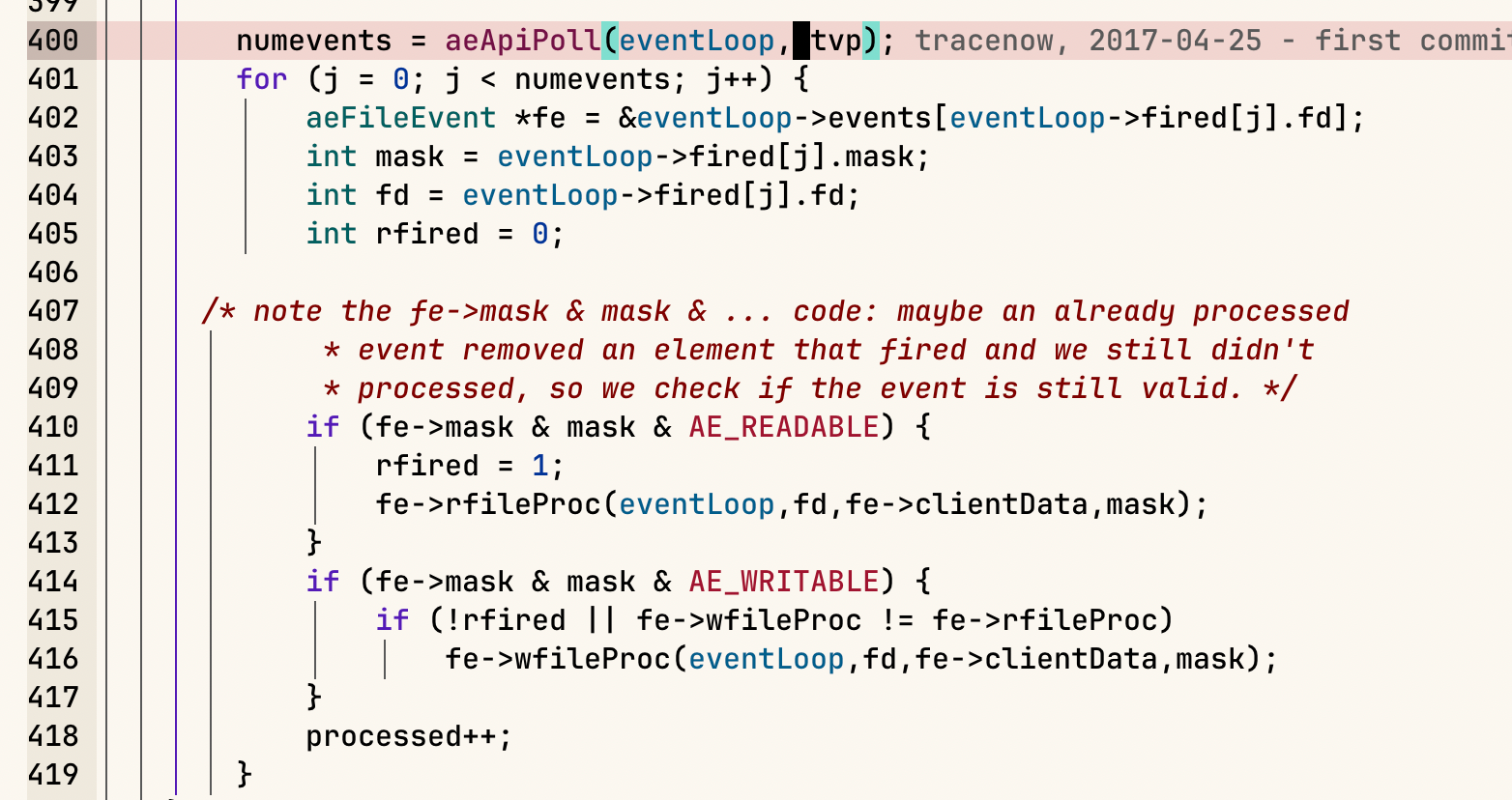
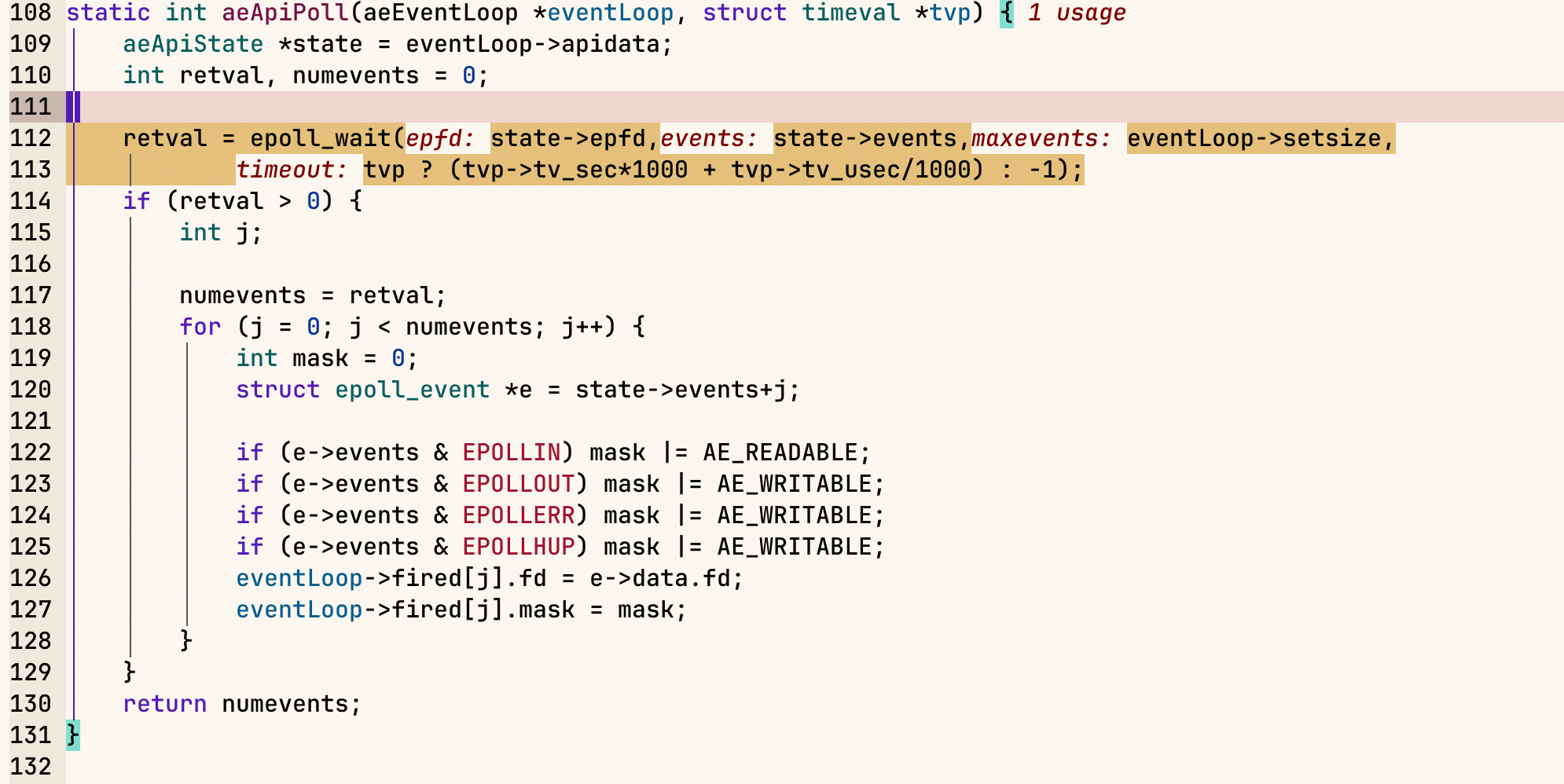
这里的aeSearchNearestTimer会扫描全list,找到最近超时的。(只能说当前redis只有一个超时时间,即serverCron,不然这个全扫有点夸张了)
如果tvp不为空,说明有time event,如果已经过期,则该超时时间被设置为0,epoll_wait立即返回。否则等待到超时。如果evp为空,说明没有超时事件(笔者注:可以在wait的时候又注册新的超时事件吗?), 则无限等待。
epoll_wait返回后,说明有要处理的event,把他们记在fired数组中。
回到上层,做handler处理。
1 | numevents = aeApiPoll(eventLoop, tvp); |
最后处理Time event:
1 | /* Check time events */ |
整个processTimeEvents 是一个while循环,遍历超时链表(又是一次全遍历):
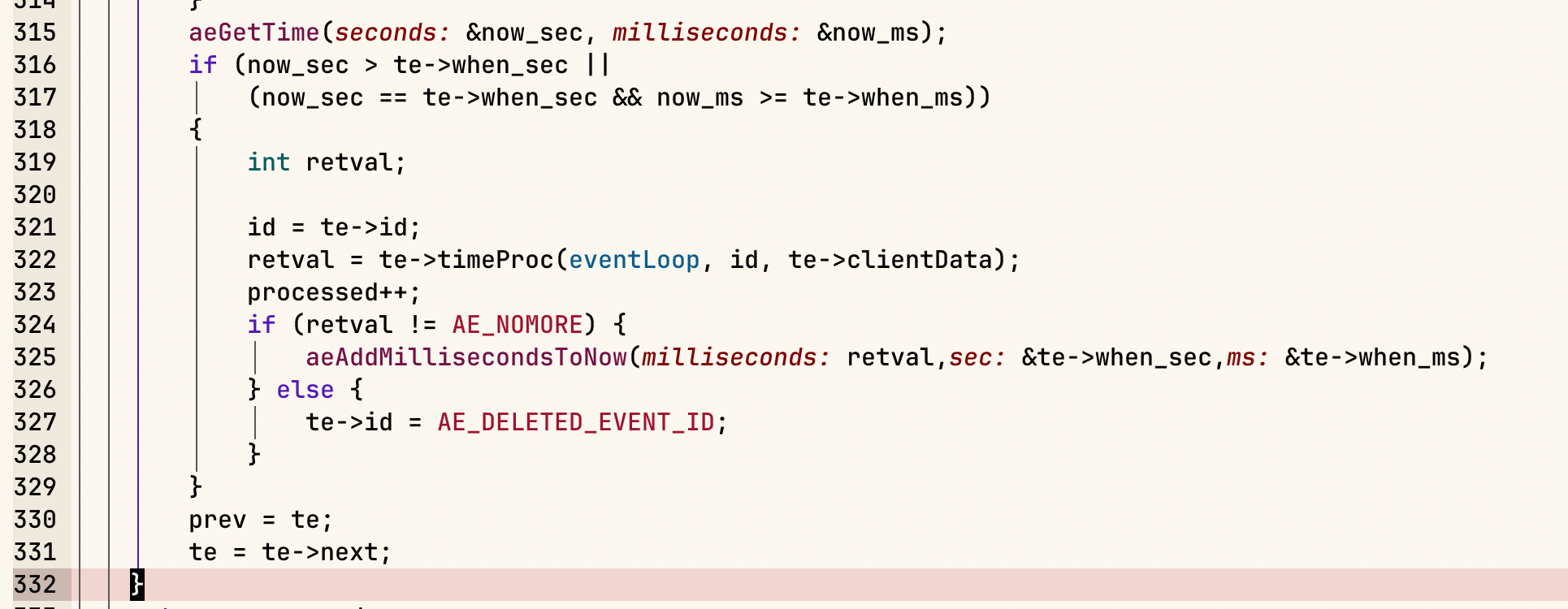
找到超时的,然后timeProc回调,如果返回了AE_NOMORE(-1),则然后标成可删除的,等到 下次处理时再删除 (为什么要等下次epoll调度?还是我的理解有误?或许是当前redis的唯一定时任务是常驻后台的,不用关心这个问题)。
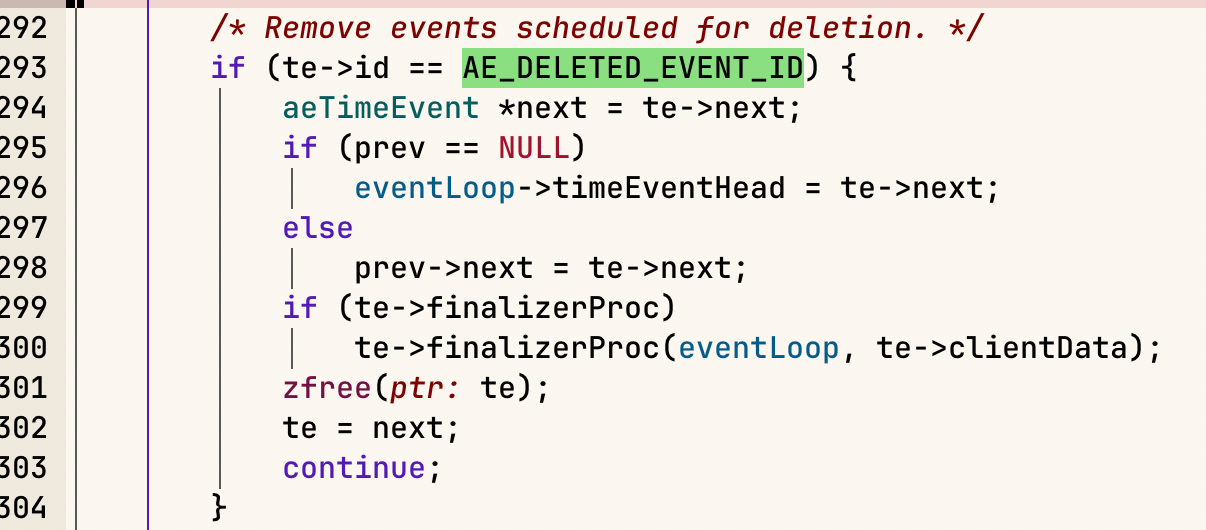
好,分析到这里,总体来说,还是蛮简单的。

